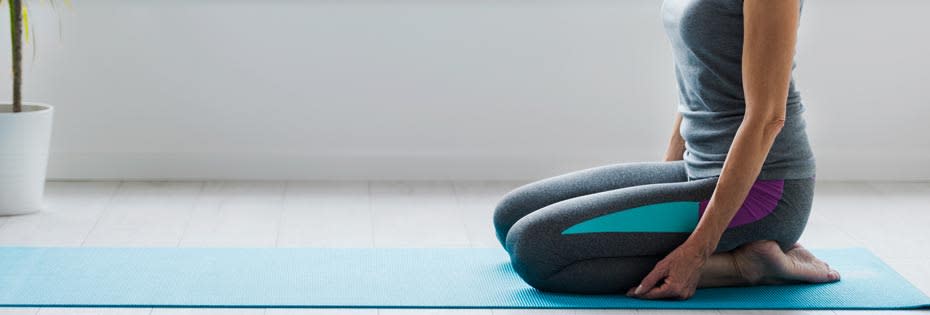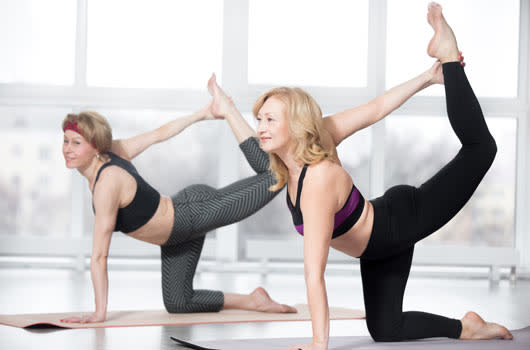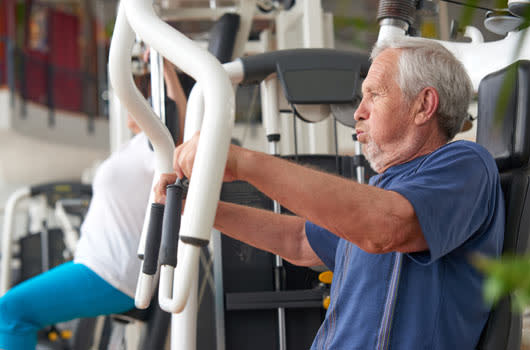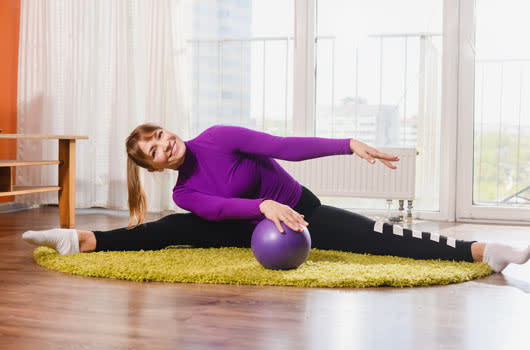What’s the best exercise for the over 50s?
Author Max Gowland, PhD
Last updated 2nd December 2020
Over Fifties Health

As we get older, exercise is essential to help our bodies remain fighting fit. Here are some top tips on how to stay physically active over the age of 50, including the types of exercise you might want to do no matter what your fitness level is.
The first thing to note is that ANY exercise is a good thing.
This can be anything from brisk walking, jogging, cycling, aerobics, pilates, yoga, zumba to working out in the gym. Simply standing up and sitting down from your chair 50 times a day, can be a form of exercise for some people if they are currently very sedentary. The type of exercise and the degree of intensity is related to what you can do currently and not necessarily your age.
How much exercise should I do?
If you haven't done any exercise for years, then the golden rule is to start gently and build up gradually. If you're exercising for the first time or are unsure if you should try a particular activity, talk to your GP first.
Experts recommend 30 minutes of moderate exercise a day at least five times a week. It can be all in a half hour session, split into three periods of 10 minutes or in smaller bouts of activity throughout your day.
A good starting point may be to begin with a short five-minute brisk walk in your local park. Then build up gradually, increasing slowly to the full 30 minutes over a number of weeks. Walking is great for your health and there are walking groups open to different ages around the country. Walking is also a very good exercise for fat burning, as low intensity exercise like this has a much higher fat burning efficiency compared to high intensity exercise like running, where carbs are preferentially used for energy.
As you get more familiar and more confident exercising, then you can think about extending the exercise and also ramping up its intensity.
This could include anything from going to a zumba class, jogging, cycling, doing aerobics, swimming gym workouts etc. These activities will make a real difference to your life, not only in how you feel all round, but also how much good it will do to your overall health.
What type of exercise should I do?
Types of Exercise
There are basically three areas that we need to think about when it comes to the different types of exercise: aerobic, resistance and flexibility.
1. Aerobic exercise

This is the type of exercise that expands your lungs and gets you breathing hard, which is great for the heart and the whole cardiovascular system. It’s so important to push our bodies on a daily basis to ensure that our heart and lungs work hard or they will simply start losing their effectiveness with time. Eventually this could lead to chronic conditions such as hypertension (high blood pressure), high cholesterol and cardiovascular issues such as heart failure and strokes.
2. Resistance Exercise

This is simply the technical term for weight bearing exercises. This can be done on a visit to the local gym where you can use a whole variety of machines to work your muscles. Or you could use your own body against gravity doing exercises such as squats, sit ups, lunges, or press ups.
And don't think that people in their fifties and over don't go to gyms….they do and in their droves, as people are realising that they need to look after their own bodies, especially as we get older.
Go to any gym and you will see more and more over 60s and over 70s visiting regularly and these people really do look great for their age, too. Also they are inhibiting age related ailments at the same time, as they continue to make exercise a part of their regular routine.
Flexibility

We all get stiffer as we age, that is just a fact of life. Some of us will just have stiff joints, while others will have sore joints and others may develop arthritis itself, which is a very common disease.
One thing is certain however, and that is that we must continue to move and use our joints daily and stretch our muscles in order to maintain as much movement as possible. If we don't do this, we'll end up getting stiffer quicker, which may lead to more joint problems and, in turn, more pain.
If you do decide to stretch then take advice from any health care professional or even a personal trainer at the gym. They'll know exactly what stretches are best for your particular age and ability, and be able to offer suggestions to help with your flexibility.
